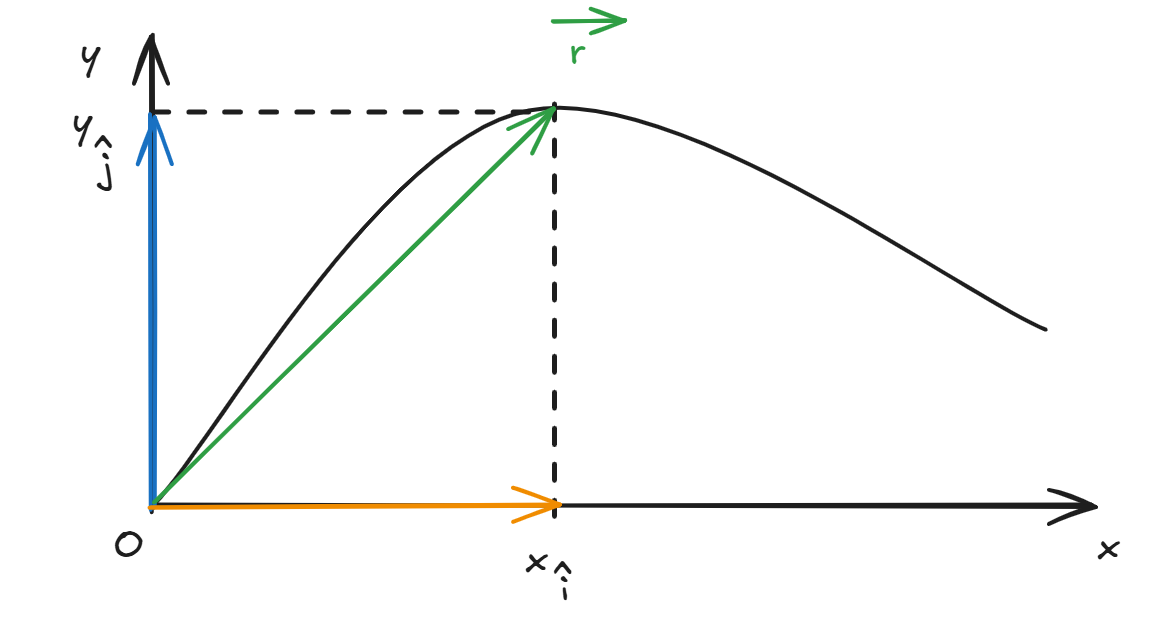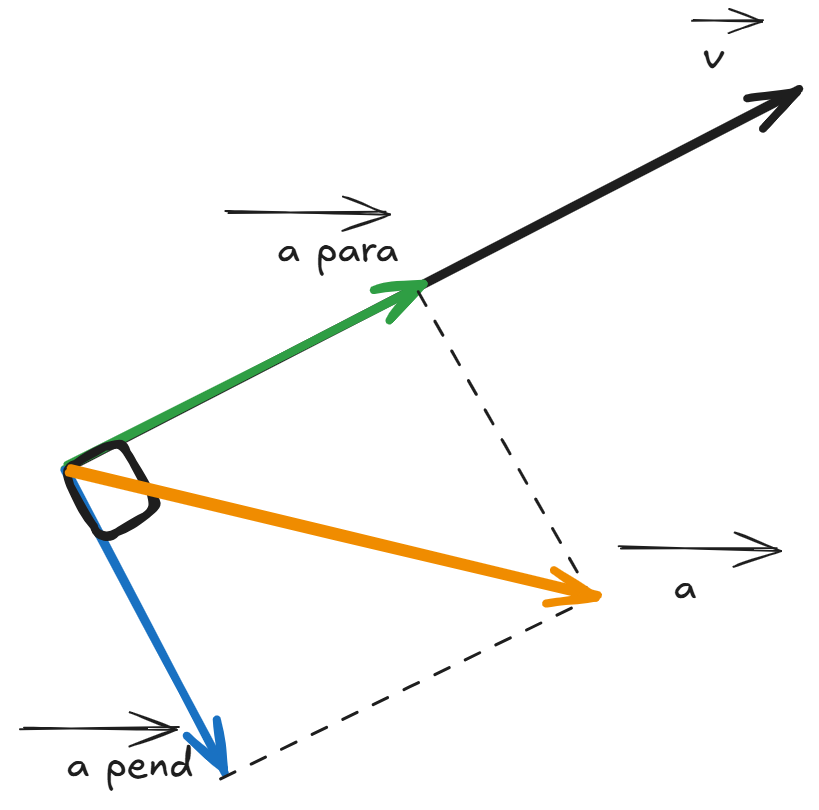We treat motion in 2D and 3D the same as 1D motion. The 2D and 3D vectors can be reduced to one axis and the same formula then be applied.
Straight Motion
 A representation of a 2D motion.
A representation of a 2D motion.
 A 3D representation of a 3D motion.
A 3D representation of a 3D motion.
Displacement: .
Average velocity: Instantaneous velocity:
Average acceleration: Instantaneous acceleration:
An acceleration vector associated with a velocity vector can be separated into 2 components:
- : parallel to the velocity vector, increase/decrease the velocity,
- : perpendicular to the velocity vector, curve the path.

Circular Motion

Components:
- Circular path
- Center
- Velocity (tangent to path)
- Acceleration
- Theta angle
For this chapter, we assume that the velocity remains constant. In a circular motion, the acceleration vector is always perpendicular to the velocity vector and point towards the center of the circular path. The two triangles are similar to each other.
As the two triangles are similar,
Other formula: